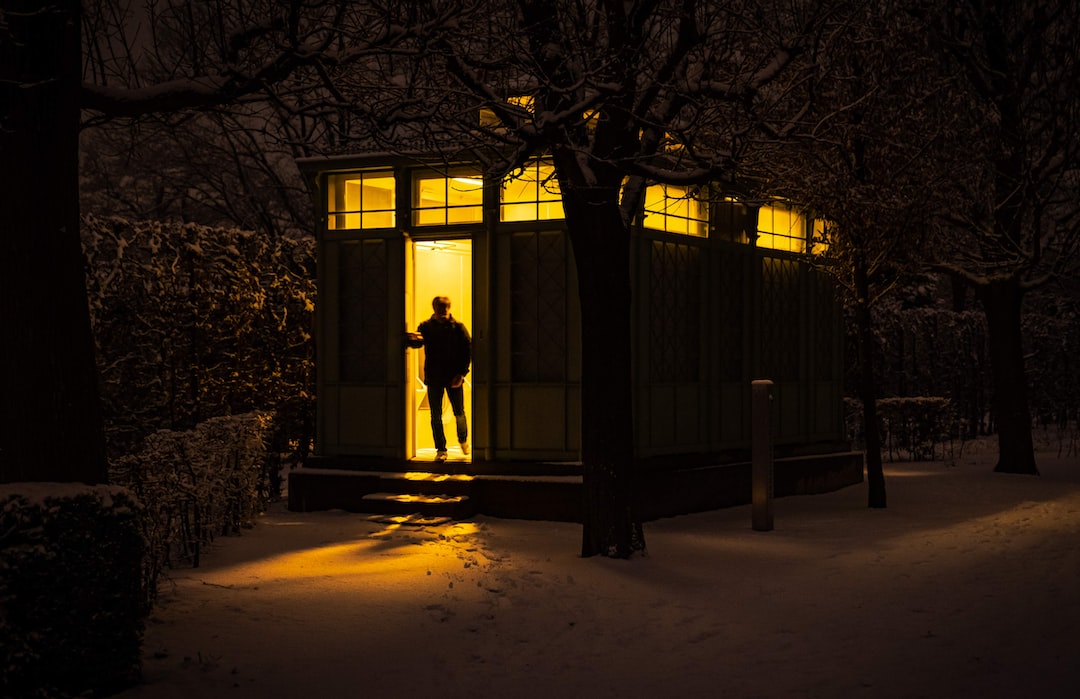Let’s take a moment to rewind, chill out, and really think about this: how often do we even consider the true impact of theater in our lives today? Like, seriously, think about it. With everything from TikToks and viral memes to Netflix series that drop an entire season in one day, it’s easy to forget that humans were entertained long before “Netflix and chill” was a thing. So why are we talking about theater—a totally ancient art that just might feel a little out-of-touch to some? Well, maybe because the magic of live performance has always been part of human experience, even if it’s lowkey lost on the Gram and non-existent in most FYPs.
See, theater is more than just some dusty old play with actors in weird outfits who talk like they’ve got a stick up their Victorian pantaloons. We’re diving into how theater can be both an epic mirror and a wild dream for different societies and cultures. From back in the day to the now, theater has this crazy ability to mix art, emotion, and real talk, all while challenging norms and shaking up the status quo.
Keep scrolling—you’re about to see how theater is so much more than a punchline in your favorite sitcom. It’s time to spotlight the undeniable power of performance. 🎭
The Origins: Where It All Began and Why It Still Slaps
The official kickoff to theater wasn’t just a bunch of Neanderthals roasting marshmallows and mimicking their worst Tinder dates. It actually traces back to ancient Greece and Rome, where folks gathered in massive stone amphitheaters to watch stories that explored everything from war and revenge to divine justice and doomed love. Imagine standing in a crowd of thousands, not with overpriced popcorn, but with your ancient equivalent, watching some of the earliest influencers—Socrates, Aeschylus, and Euripides—serve up full courses on the human condition in epic stages.
The beauty of these performances? They weren’t just lowkey dragging on like a bad YouTube ad. They were telling stories that echoed real-life struggles, battles, and heartbreak. These performances blew people’s minds (yeah, even though they didn’t have CGI) because they were raw, unfiltered, and real.
Different societies used theater in their own unique ways, be it a way to worship gods, pass on cultural narratives, or question authority. It was lit for personal, spiritual, and community growth which was why it stuck through centuries, evolving with every culture that touched it.
How Theater Calls Us to ‘Wake Up!’: The Woke Power of Performance
Fast forward to today, and it might seem like theater is kinda sleep—something you’d barely swipe up for unless your BFFs are in the cast. But hold up, because it still holds massive relevance. The biggest weapon theater has always wielded? Its ability to make us look closer.
Theater, with all its dramatics, can lowkey serve as both a wake-up call and an emotional rollercoaster. When that spotlight hits, suddenly you’re not just watching a performance, you’re peeping into someone else’s life, struggles, choices, and outcomes—live. The characters up there become living, breathing mirrors or warnings. Think about watching something like “Hamilton” and suddenly catching feels about democracy, liberty, or justice. Or maybe you’d consider the powerful message on social issues from “Dear Evan Hansen” or “The Vagina Monologues.”
Stories like these are literally the oldest form of woke. They don’t tell you to do the right thing but make you feel why it matters. They challenge the way we think about things like gender norms, race, mental health, and power structures. It’s like theater’s ultimate flex is how it doesn’t lecture—you reflect. Dope, right?
Stripping Down the ‘Theatrics’: Why Minimalism Sometimes Hits Harder
While TikTok serves its genius with 60-second “minimalism” life hacks, come to think of it, theater has been slaying the minimalist game for centuries. It’s not always about grand sets, explosive effects, and 100-piece orchestras pulling out all the stops. Stripping things back to the bare minimum can sometimes deliver the most explosive results.
Check it: You don’t need much more than characters, voices, and a stage to trigger emotions that no meme ever could. The power of a single person standing in the spotlight with nothing but their words and expressions, facing off with life’s messiness in front of a live audience—that’s when the feels hit different. It’s all raw. It’s all real. And it’s got your brain in overdrive.
Even Shakespeare kept things pretty minimalist in his time (#JustSaying). The lack of opulent set pieces or props often forces the audience to use their imagination, to connect more deeply with the actors’ emotions and stories. Plays like “Waiting for Godot” and “The Glass Menagerie” are prime examples. Both are stripped down, allowing the dialogue, characters, and underlying truths to truly resonate. That’s the real deal in any performance. Whether you’re Team Excessive (Cirque du Soleil, anyone?) or Team Minimalist, there’s magic in both.
Identity and Representation: Theater as a Place for ‘We the People’
Alright, let’s talk squad goals—representation in theater. Historically, the stages were so white (and male), it hurt. But times are changing, and theater is finally catching up. It’s becoming a space where more folks see themselves represented, where diverse voices are heard, and where marginalized stories are shared with the world.
When you see stories on stage that embody the authentic experiences of Black, Asian, Indigenous, LGBTQ+, or any other marginalized communities, it’s not just representation—it’s validation. The fact that you can now go see a play like “Fairview” or “Slave Play” that challenges norms, flips stereotypes, and holds a mirror up to society is major. These plays go beyond just being performative with their diversity. They go deeper, they dismantle the structures of power and privilege that we’ve been spoon-fed for too long.
That’s not to say theater has arrived. There’s still tons of work to do. Showing representation on stage isn’t just key in reflecting society as it is, but also in shaping what society can become. And that’s hella powerful.
The Collective Vibe: How Theater Builds Community
Ever been to a live theater event where the energy in the room was so thick you could cut it with a knife? Whether we’re talking about Broadway, a high school play, or an indie production in some dude’s basement, there’s something about sharing a live performance with others. You’ll feel those shared gasps, laughs, awkward silences, and sometimes tears.
This collective energy isn’t random; it’s the result of different people—sometimes total strangers—coming together to vibe off the same story. When we share these experiences with others, it’s like we collectively affirm something big—each other’s humanity. Even that quiet post-show stroll afterward, when you’re both processing what you just witnessed, is part of that shared experience.
So much of today’s world has us glued to screens, but live theater pulls us into something tangible. IRL emotions are harder to experience in a digital space. The sense of community formed when people watch a deeply moving play can give them that necessary moment to think beyond themselves. Whether you’re introverted or extroverted, collecting these moments with others can be life-altering. The impact is real, and the vibes stay with you for life.
From Boomers to Gen-Z: How Theater’s Still Flexing
Okay, so your grandparents, parents, and even you were dragged into the theater at some point in your life—mixed reviews, for sure. Honestly, it’s not entirely your fault that modern screen culture occasionally shadows the theater. Netflix does its job keeping us occupied (no shade), but theater has adapted in some ridic ways to stay relevant.
First, you don’t gotta rock the traditional types, i.e., going to a performance surrounded by middle-aged art lovers. Gen-Z wants to be seen, and theaters are shifting to "get" us. They’re introducing immersive performances, interactive storytelling, and blurring the lines between the audience and performers. Fancying yourself someone who likes to do more than spectate? Participatory theater is right up your alley. These productions turn the audience into crucial participants. Think “Sleep No More” in NYC, where the audience roams freely instead of taking a book-it ticket.
Also, they’re turning to social media and marketing beyond the usual crowd. Their Instagram feeds? Fire. The hype follows the creativity on stage, and suddenly, you’re itching to check out that play that slid across your IG reel. Digital tools have also given life to new genres, drawing artist after artist to explore niche ideas that push theatre further into a whole experience rather than just watching a show.
The Influence Game: Theater’s Grip on Pop Culture
If you think theater doesn’t influence pop culture, then heads up: the joke’s on you. While your old-school vibes might make you think mainstream media is everything, theater’s been lowkey steering the ship even when you weren’t aware. Take Hamilton. It didn’t just drop— it dominated; its ripples were felt through music, fashion, and even social justice movements. Lin-Manuel Miranda turned a historical narrative into a Grammy and a philanthropy sensation. Who else could get founding fathers into hip-hop-aesthetic?
Even classic plays have had major drip on pop culture. Shakespeare’s plays? At this point, they’ve been rolled into everything: “The Lion King” (Hamlet, duh), “10 Things I Hate About You” (Taming of the Shrew), and every Shakespeare-inspired quote you’ve seen on Pinterest (“To thine own self be true,” much?). Theater seeds ideas that sprout across genres—whether it’s movies, fashion, music, or even meme culture (#RomeoAndJuliet2023, anyone?).
Theater isn’t just a relic from the Renaissance; it’s alive and pouring into your day-to-day style, slang, and content. Just a heads-up: we all owe a lot to thespians who created iconic cultureic content before "influencer" and "creative" were even a thing.
Theater’s Role in Social Change: Moving Us Toward Brighter Tomorrows
Let’s get real for a sec; theater isn’t all glitter and dramatic monologues. It can be a hardcore tool for social change. We already know it demands the audience’s attention and gets them thinking, but when theater’s done right, it can be a megaphone for social justice, equality, and human rights.
The late 20th century alone was packed with productions that shook up the status quo. “Angels in America,” for example, turned the spotlight on the HIV/AIDS epidemic pushing people to face uncomfortable truths. Plays like “A Raisin in the Sun” challenged America’s race issues head-on without tiptoeing around the subject.
Theater, today, continues to be a voice for those silenced in mainstream conversations. We see this with productions pushing progress, like “What The Constitution Means to Me” which explores gender equality and the problematic history of our very constitution. Theater becomes a safe space where hard conversations can happen—with empathy.
This connection between social change and theater is crucial for us because we’re the generation that’s real about activism. Whether you’re walking the walk in climate change, body positivity, mental health awareness, or fighting for equality, get it in your head that theater has had its receipts as a catalyst for change. Just imagine using it to push that same agenda forward. Even if you weren’t keen before, it’s worth that second look.
The Healing Vibes of Theater: Theater Therapy Is a Thing
What if I told you that theater can heal? It’s not just about epic narratives or dramatic battles; it’s also a legit therapeutic tool. Okay, so we know theater is raw. It strips away pretense and lets us access emotions that we often keep buried deep down, but beyond just sitting in the audience getting those feels, theater can also be used in therapy (yeah—like actual therapy).
Theater therapy or drama therapy includes role-playing, reenactments, storytelling, and more— all as a way to explore trauma, improve mental health, and provide alternative perspectives. It allows people to express things they might not be able to in clinical settings. Ever notice how you’re more comfortable being vulnerable when you’re pretending to be someone else? That’s where the magic of theater comes to play.
The results can be transformative, helping people process all sorts of emotional challenges. Techniques like playback theater, where individuals tell personal stories that are then enacted creatively by actors, allow participants to engage directly with their grievances, fears, and hopes. It’s lowkey amazing how stepping into another persona can help people confront their personal issues. It can redefine therapy by placing you in the center of both an art form and self-discovery.
Tapping into Creativity and Innovation: How Theater Fuels Our Imaginations
When it comes to creativity, think of theater as the O.G. that sprinkles some next-level inspo into our world. How many of us have not felt the rush of wanting to create, to innovate, or just throw caution to the wind and pursue something that vibes with us? Theater has always been a hub for unapologetic creativity, and it’s not only contagious but also wildly influential.
Theater’s influence on creativity isn’t just confined to other arts like film and music. It’s shaped entire cultures’ approach to storytelling and imagination. Ever hear about “commedia dell’arte?” This Italian theatrical form involved performers improvising and fed much of what we consider comedic tropes today. That Netflix series you’re obsessed with? Yeah, it’s steeped in these centuries-old traditions.
The beauty in theater is its out-of-the-box thinking. Productions are always finding new ways to challenge norms and put a spin on what’s expected. You want to disrupt an industry? Keep in mind how theater does with, like, every show produced. 💥
Whether it’s triggering wacky ideas or simply making us feel inspired, the vibes flowing from these performances can literally fuel a generation of innovators. That’s because theater isn’t just about the stories you see on stage—it’s also about the gears that start turning in your head afterward.
The Grit: How Theater Requires Empathy, Practice, and Pure Determination
If you think theater is just putting on some makeup, strutting on stage, and boom—you’ve nailed it, time to think again. Theater is wild with the amount of grit it demands. Whether you’re the writer, director, actor, or someone behind the scenes, creating a production isn’t for the faint of heart.
First, theater asks for empathy—whether you’re understanding a character’s pain or portraying it. Actors must dig deep into often painful emotions and experiences while writers and directors need to ensure these layered portrayals are resonating authentically. This isn’t “fake it till you make it”; it’s about putting in the work to understand the depth while keeping it real.
Don’t even get us started on the hours of rehearsals, creative clashes, and pressure to perform. Actors aren’t just memorizing lines; they’re embodying completely different personas. Directors orchestrate carefully constructed visions, while the tech crew ensures everything runs smoothly—the list of demands goes on and on. Honestly? It’s exhausting.
But it’s equally rewarding. Theater pushes everyone involved to drop their egos, collaborate at impressive levels, and deliver emotional freight that’s nothing short of real. It’s art that demands all of you—and then some. And yeah, that can be terrifying AF, but for those who commit, the fulfillment is matchless.
The Niche and the Experimental: Subcultures Keep Theater Edgy
Mainstream theater is all waves with the hits you’re probably used to hearing about. But let’s not forget the underground vibes kept alive by the niche and experimental scenes. These subcultures might not have the clout of Broadway but are keeping theater cutting-edge.
These are the spaces where real “anything goes” energy thrives, allowing for bolder, weirder, and wilder explorations of what theater can be. From unconventional venues (forget the several-hundred-seats-setup; think warehouses and makeshift stages) to the kind of creative concepts that turn the stage into a giant metaphor, experimental theater lets imagination run wild. Productions might abandon language altogether and rely on movement, sounds, or even silence to communicate. Lowkey, it’s the bootleg theater format that’s cultivated a vibe so strong, it’s birthed countless viral moments in theater history.
Subcultures within theater are also where diverse voices really shine. Decentralizing the power of big, mainstream productions and giving space to underground voices ensures that underrepresented demographics find their stories told in compelling and genuine ways. It’s here that Gen-Z theater aficionados are dead set on challenging traditional narratives.
That said, if you’re craving something out-of-the-box—stuff no one else is doing or even considering—dig into these experimental scenes. You might find they’re halfway to creating the next viral cultural phenomenon before it hits the mainstream.
Beyond Entertainment: Theater as a Form of Activism
We’ve mentioned how theater’s role is evolving—big time. Let’s dive into how, at its most revolutionary, theater becomes activism itself. More than just talking about social issues, theater can actively engage audiences with causes, staging resistance against injustice, oppression, and inequality.
Activism and theater often overlap, especially with “Theatre of the Oppressed” by Augusto Boal, which turned theater into a direct tool for social activism. Commands were less about entertaining, more about empowering. The idea was to create “spect-actors,” or audiences who could step into the performance, interact, and change the course of the play. The goal? To think of real-world solutions in addition to the theoretical ones they witnessed.
Fast-forward to today, and you see activism and theater still walking hand in hand. Productions might donate ticket sales to causes they’re spotlighting, launch post-production discussions aimed at mobilizing the audience, or even offer platforms for marginalized communities to bring their work to the mainstream stage.
The key to such plays is to move audiences from slacktivism to full-on activism. You might have one intention going into the theater, but by the time you leave, you’re more in tune with ways you can contribute to social change. And honestly? We need that more than ever in a world where social climates are heavier than ever.
The Future of Theater: How AI and Digital Tech Might Shake Things Up
Before you know it, cutting-edge tech could be making its way into the theater domain in ways we can hardly imagine. Think AI. Think holographic actors and augmented reality experiences that contribute not only to set design but to the storyline itself.
Digital tech is already cutting into how stories are told; interactive plays where the audience dictates the storyline could become mainstream. AI-generated scripts might experiment with spoken-word narratives that challenge human creativity like never before. Already, some productions are dreaming up stages where the audience doesn’t merely watch—they experience the set in completely new ways: virtual realities or holographic landscapes.
The fear of robots stealing our jobs is a perennial complaint, but theater might just have the staying power to collaborate creatively. The future is a mix of human passion and AI-powered tools that will set the stage for entirely new experiences. It’s a future where boundaries get pushed far beyond the wooden stage and velvet curtains. The theaters of tomorrow might be more virtual, immersive, and interactive, but they’ll still demand that core human essence.
If we keep riding the wave of innovation, expect to see theaters that are out of this world—where stories unfold with onscreen energy, but with IRL humanity that brings chills down your spine.
FAQ — The Lowdown From Center Stage
So, why should I care about theater when I have Netflix?
Simple: Theater is energy personified. It’s raw, live, and in-the-moment in a way that streaming can never replicate. You’re participating in an art form that demands your full focus, turning you from passive observer to active participant. It’s a different vibe altogether.
Do people still go to theater?
Absolutely! People not only go to theater, but they still relish it. And it’s no longer just grandma’s pastime. With innovations like immersive viewing experiences and plays that speak to contemporary issues, theater’s attracting younger audiences more than ever.
Can theater actually make a difference?
Bet. Theater has been a leader in social change for centuries. It doesn’t just reflect society—it shapes it. From historical motions to direct activism, theater continues to challenge perceptions, promote justice, and even inspire policy changes.
What are some good performance genres to start with if I’m new to theater?
Start with popular modern hits like “Hamilton” or “Wicked” for something accessible and fun. If you’re into social narratives, plays like “The Crucible” or “Dear Evan Hansen” tackle themes that’ll resonate. Want something unconventional? Experimental theater could be your new jam—try productions like “Sleep No More” or anything from smaller, indie theaters.
Is there a digital future for theater?
For sure. While live performances will always be the core, expect digital integration, augmented reality, VR, and AI to create hybrid forms of theater that are more immersive than ever. It’s gonna be another level of participation—not just as an audience member but as a co-creator in the artistic process.
Sources and References
- Aristotle (335 BC). “Poetics.” – Theatre’s ancient roots illustrated in understanding drama.
- Boal, Augusto (1974). “Theatre of the Oppressed.” – How theater was shaped into an instrument for social change.
- Crowley, Clarissa (2022). "The Boom of Immersive Theater in the Digital Age.” – Focuses on how theater adapts to tech advancements.
- Horwitz, Jane (2021). "How Theatre Changed Post-Covid and What We Can Expect in the Future.” – Evolution of theater during challenging times.
- “Shakespeare and Pop Culture” (2020). Harvard University Press explores the cultural impact of classical drama on the modern world.
- Wagner, Mary Jo (2019). "The Role of Representation in Modern Theater.” – Analysis on how diverse voices shape the modern stage.
There you have it, fam. 👏 Theater is a vibe, a movement, and it’s got roots way stronger than you’d imagine. It might not always get the glamor of viral internet content, but its power and influence? Timeless.




